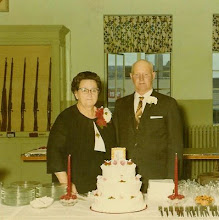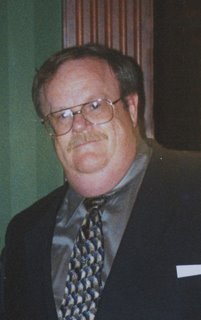EPHRIAM GWINN was the father of Samuel Keller Gwinn and Mary Jane Gwinn, who along with their spouses, Marshall Richmond (it had not yet been changed to Richman) and Cynthia George Gwinn were early settlers north of Humeston Iowa.
I found this write-up on Ephriam. It is undated and uncited, but apears to be accurate in most details.
Ephriam James Gwinn was born June 14, 1799. When he was only a few months old his family moved from the settlement of Lowell to the Green Sulphur Springs. It is presumed that he received his education in Lewisburg. The Lewisburg Academy according to tradition began in 1810 in the home of Rev. Dr. John McElhenney who came to Lewisburg in the Year of 1808 from Lexington, Virginia where he had been a student at Washington College. The Academy was built prior to 1812 and was the first brick structure in Lewisburg. No doubt Ephraim, like other students, boarded at the McElhenney home while attending the school
On April 11, 1822 he married, in Monroe Co., Rachel Keller, the daughter of Conrad Keller. On December 20, 1823, Samuel Gwinn, his father, gave them over 400 acres of land on Lick Creek, "for and inconsideration of the love and affection which he has for his son." After the death of his father, Ephraim was given the Green Sulphur tract. He soon contracted with Capt. Silas Taylor to build his home near the spring. It was paid for with four tracts of land given by Ephriam and his wife; one tract to each, the carpenter, the stone mason, the timbercutter, and the brick mason, Mr. Taylor. The house is well over 130 years old and was the first brick home in the Green Sulphur District. The originial building was seven rooms, nine fireplaces and walls thirteen inches thick of bricks made by hand near the Sulphur Springs. In later years six more rooms were added. Today a large and impressive house overlooking route twenty. It is sad to say that the home stands in the path of Interstate 64. It is hoped that the home can be moved to another location; if not it will be another page of our past removed by so called "progress."
In 1848 Mr. Gwinn built the first school in Green Sulphur Springs. It was a one room, split log building. It had a dirt floor only one door and no windows. That same year in June Ephraim became clerk of the Lick Creek Baptist Church holding that position for twenty years. On April 24, 1852, Mr. E.J. Gwinn and Rachel his wife due to his deep religious beliefs did give grant and donate to the trusties of the Baptist Church half acre of land upon which the New Meeting house now stands. This was the first church building erected in Green Sulphur District. A one story log house about 30x50 feet, with an aisle down the center. Women sat one side and men on the other side during service. In 1855 //Ray's note: This date needs to be reconciled. Samuel's firstborn, Andrew, was born 1849 in Iowa.// Ephraim Gwinn went to Iowa and bought over 1,700acres of land in Wayne Co., Iowa. He divided the land and gave six of his children a large tract by deed dated November 10, 1855. Two of his children, Samuel and James, then moved to the new land and settled there. They worked and developed the land their farms having remarkably fertile soil. When Ephraim wrote his will he ordered his son Marion to pay James $170.16 so that all his children would receive an equal share in his estate. Later an amendment was added which stated; "having visited the State of Iowa in 1874 and veiwed the lands given to my several children in that state I am of opinion that one hundred and twenty dollars is as much as said James M. Gwinn is entitled to." Iowa is one of the foremost agricultural and stock-raising states in the United States. Ephraim could not have choose better land to give his children then that in Iowa.
Mr. Ephraim Gwinn had one of the largest libraries in Summers Co. his love for books exceeding only his desire to do good and help others. In his will he wrote: "Be it remembered too, that I have divided my library among my seven children by writing each ones name in the book that I intend for him or her."

